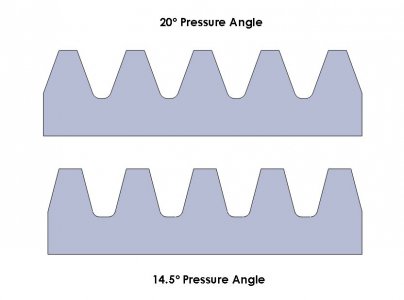- Joined
- Sep 29, 2017
- Messages
- 2,259
I think he measered it roughly. He is a farmer not machinist remember 


Maybe by a thou or two. You need to know the center distance measurement accurately to a thousandth of an inch, two max or you stand a really good chance of making gears that won't turn because the teeth are clashing or they are so far apart they will strip.. If the center distance cant be adjusted, can you adjust the OD or is that taboo
I'll see what I can figure out tomorrow.A accurate measurement of the center distance is necessary to know where we are going with all this.

